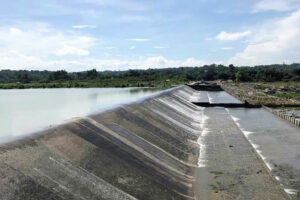THE government’s transfer of the National Irrigation Administration (NIA) to the Office of the President (OP) is expected to improve its access to funding, analysts said.
“Placing NIA under the OP would help the agency get proper and timely funding,” Federation of Free Farmers National Manager Raul Q. Montemayor said via Viber.
He added that the move could have knock-on effects on the funding of other agencies like the National Food Authority in the form of marketing support to farmers and the Department of Public Works and Highways in terms of building irrigation infrastructure and farm-to-market roads.
“There should however be proper coordination with Department of Agriculture (DA) programs and implementers,” Mr. Montemayor said.
Last week, President Ferdinand R. Marcos, Jr. issued Executive Order (EO) No. 69 transferring control of the NIA from the DA. EO 69 cited the need to streamline and rationalize the functions of the irrigation agency.
In his State of the Nation Address, Mr. Marcos pushed for more irrigation dams and bulk water projects to ensure sufficient usable water for communities.
“It is highly likely NIA will secure additional funding for irrigation projects,” University of Asia and the Pacific Center for Food and Agribusiness Executive Director Marie Annette Galvez-Dacul said via Viber.
She added that the transfer would hasten the decision-making and approval process for major irrigation projects.
On the other hand, Former Agriculture Undersecretary Fermin D. Adriano said that the NIA should have been kept within the purview of the DA.
“Management-wise, NIA should be under the DA because the former’s services cater to DA’s major clients, which are the palay farmers,” Mr. Adriano said via Viber.
“This assumes that DA leadership understands the science of raising palay productivity, lowering production costs and increasing farmer incomes,” he added.
Leonardo A. Lanzona, Jr., a professor of economics at the Ateneo de Manila, said the NIA mandate is to support agricultural production, and thus should be headed by the DA.
“The NIA does not belong in the OP but in the DA. Irrigation is only of the inputs for production. If improperly applied, in certain situations it can be either ineffective or disruptive to other inputs, such as labor,” Mr. Lanzona said via Facebook messenger.
Only 68% of the country’s farmland is irrigated as of 2023, or an estimated 2.11 million hectares, leaving 1.1 million hectares yet to be irrigated. — Adrian H. Halili
